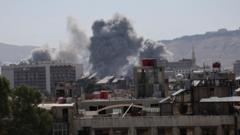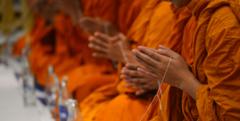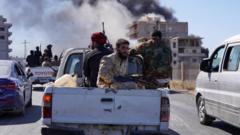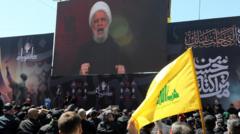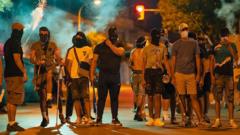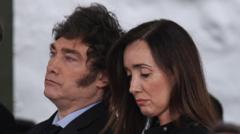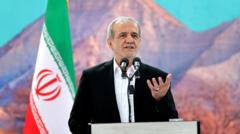Demonstrators are calling for President William Ruto's resignation, with significant clashes leading to injuries and heightened tensions across the nation.
**Clashes Erupt in Kenya as Protests Against Government Intensify**
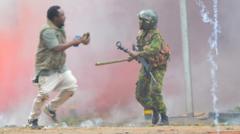
**Clashes Erupt in Kenya as Protests Against Government Intensify**
At least eight fatalities reported amidst nationwide unrest sparked by demands for governmental accountability in Kenya.
In a tumultuous wave of protests sweeping across Kenya, at least eight people have tragically lost their lives, and around 400 have been reported injured as citizens voice their dissent against President William Ruto’s administration. According to reports from medical professionals and human rights organizations, the clashes erupted as thousands of protesters took to the streets chanting for accountability and urging for the president's resignation.
In response to escalating protests, police employed tear gas and water cannons in an attempt to disperse disorderly crowds. The whimsical atmosphere of the protests was symbolized by individuals waving branches—a representation of non-violent resistance. While the government attempted to stifle coverage of the protests by banning live broadcasts, the High Court in Nairobi swiftly overturned this decree, allowing media to report on the unfolding events.
President Ruto addressed the nation during a burial ceremony in Kilifi, calling for the preservation of peace and stability within Kenya. He implored protesters to recognize the potential repercussions of their actions, saying, "We do not have another country to go to when things go wrong." Meanwhile, as demonstrators attempted to reach his official residence, they faced heavy barricades and police resistance.
These protests resonate deeply with the memory of similar unrest that occurred a year prior, where a significant number of lives were lost in a surge of anti-government sentiment. Last year’s protests saw over sixty individuals perish amid confrontations with law enforcement. This year, organizations such as the Kenya Medical Association have released statements outlining the serious injuries suffered during this latest wave of dissent, including eight gunshot wounds among the injured.
Among the demonstrators, Amina Mude expressed her motivation for participating, emphasizing the urgent need for leadership to heed the concerns of the populace, particularly regarding education and other critical issues affecting society. The chaotic scenes in Nairobi were marked by the sight of tear gas clouds enveloping the streets, as protesters sought refuge from the harsh measures deployed by law enforcement.
As the situation develops, the stark reminders of last year's clashes linger, with many carrying banners memorializing victims of past protests. In handling these current events, Kenyans remain steadfast in their call for justice and sustainable governance while navigating a landscape fraught with tension and loss.
In response to escalating protests, police employed tear gas and water cannons in an attempt to disperse disorderly crowds. The whimsical atmosphere of the protests was symbolized by individuals waving branches—a representation of non-violent resistance. While the government attempted to stifle coverage of the protests by banning live broadcasts, the High Court in Nairobi swiftly overturned this decree, allowing media to report on the unfolding events.
President Ruto addressed the nation during a burial ceremony in Kilifi, calling for the preservation of peace and stability within Kenya. He implored protesters to recognize the potential repercussions of their actions, saying, "We do not have another country to go to when things go wrong." Meanwhile, as demonstrators attempted to reach his official residence, they faced heavy barricades and police resistance.
These protests resonate deeply with the memory of similar unrest that occurred a year prior, where a significant number of lives were lost in a surge of anti-government sentiment. Last year’s protests saw over sixty individuals perish amid confrontations with law enforcement. This year, organizations such as the Kenya Medical Association have released statements outlining the serious injuries suffered during this latest wave of dissent, including eight gunshot wounds among the injured.
Among the demonstrators, Amina Mude expressed her motivation for participating, emphasizing the urgent need for leadership to heed the concerns of the populace, particularly regarding education and other critical issues affecting society. The chaotic scenes in Nairobi were marked by the sight of tear gas clouds enveloping the streets, as protesters sought refuge from the harsh measures deployed by law enforcement.
As the situation develops, the stark reminders of last year's clashes linger, with many carrying banners memorializing victims of past protests. In handling these current events, Kenyans remain steadfast in their call for justice and sustainable governance while navigating a landscape fraught with tension and loss.








